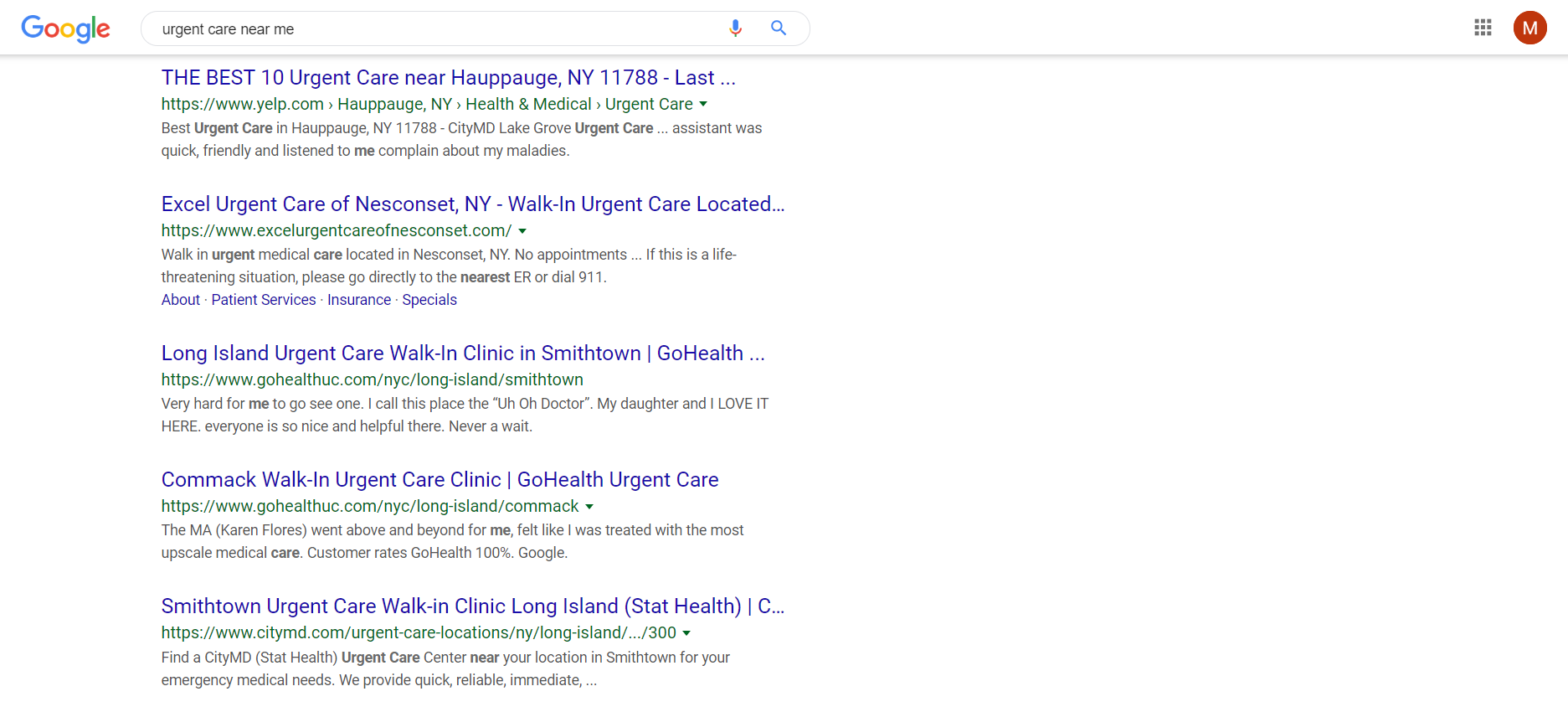When you have the flu and you need to find a new doctor who can take you right away, what do you do? Many people will begin by searching on the computer or their smartphone and the most popular place to start is Google. A simple query like “urgent care near me” or “primary care physician in…” can yield tons of results on Google, but for the most part, people won’t look past the first page.
So, if you’re a healthcare provider, ranking high on Google should be a priority if you want to increase your website traffic and number of new patients. This is why SEO (search engine optimization) is going to be one of your most important tools when it comes to digital marketing. In this post, we will go over some of the best tactics for healthcare SEO, so that you can start moving up the SERP and appeal to more potential patients. It’s important to remember that SEO is a continuous process and will require a long-term commitment to ensure consistent results, but by following these tips, you can get started and then work to build out a long-term SEO strategy for your healthcare facility.
Top 3 Tips for Healthcare SEO
- Choose Keywords Wisely: Think about how people are searching on Google. In today’s day and age, most internet users don’t type complete thoughts into Google. Instead, they search how they talk, meaning they may ask questions or use location modifiers like “near me”. Be sure to do your research about which keywords your competitors are ranking for and also determine which keywords generate the greatest search volume. There are some excellent tools for conducting keywords research, including Google’s Keyword Planner, SEMrush, and Answer the public. Google’s Keyword tool and SEMrush will tell you the search volume and competitive ranking of different keywords. They will also give you keyword suggestions. SEMrush is also great because you can conduct a competitive analysis, comparing your keywords and their rankings to those of your top competitors.
- Optimize Your Meta-tags: The keywords that you focus on for your specific healthcare facility should be present throughout the content you create for your website and other platforms. In addition, the keywords should be in your title-tags and meta-descriptions. The title-tag and meta-description are what users see when they search on Google. For instance, if I conduct the same search, “urgent care near me,” I can see that each result has a title-tag and meta-description.
When you are creating your titles and descriptions, it is crucial to keep in mind the character limits. Titles should typically 65 characters or fewer. Descriptions should be under 150 characters. However, you want to make sure that your titles and descriptions are long enough to convey the important information. In the example above, the title is exactly long enough o fully display and the description is fairly comprehensive. In the example below, the title gets cut off and the description isn’t unique for search engines. Rather, it is just pulling the first 150 characters from the page.
These might seem like small details, but they really make a different to the user in terms of experience and ease of acquiring the information they need.
- Create Unique Content: You need to post content regularly to promote your website. There are multiple platforms for promoting content including a blog, ebook, and social media. When you are developing content, you want to make sure that you’re writing about topics that users are actually searching. This means you need to do some research, similar to when you were searching for keywords. You can use SEMrush and Answer the public to get ideas for content, including questions that people ask and trending topics.
If you have a blog, you should be posting at least twice per month in order to reap the benefits of the content. In addition, share your posts on social media platforms like Facebook and Twitter. The most important thing is to make sure your content is original. If you copy the same material from another website, you’ll actually hurt your SEO efforts. Therefore, it is important to have a team of content marketing specialists and copywriters to keep the original content flowing.
Get Started with Healthcare SEO
If you’re ready to get started with SEO for your healthcare facility, take the points from the post above and set up a short-term plan. If you want a team of SEO experts to get the long-term plan in place and deliver results consistently, contact Skyrush Marketing for a free consultation. Skyrush Marketing is a digital marketing company serving New York and Long Island.





